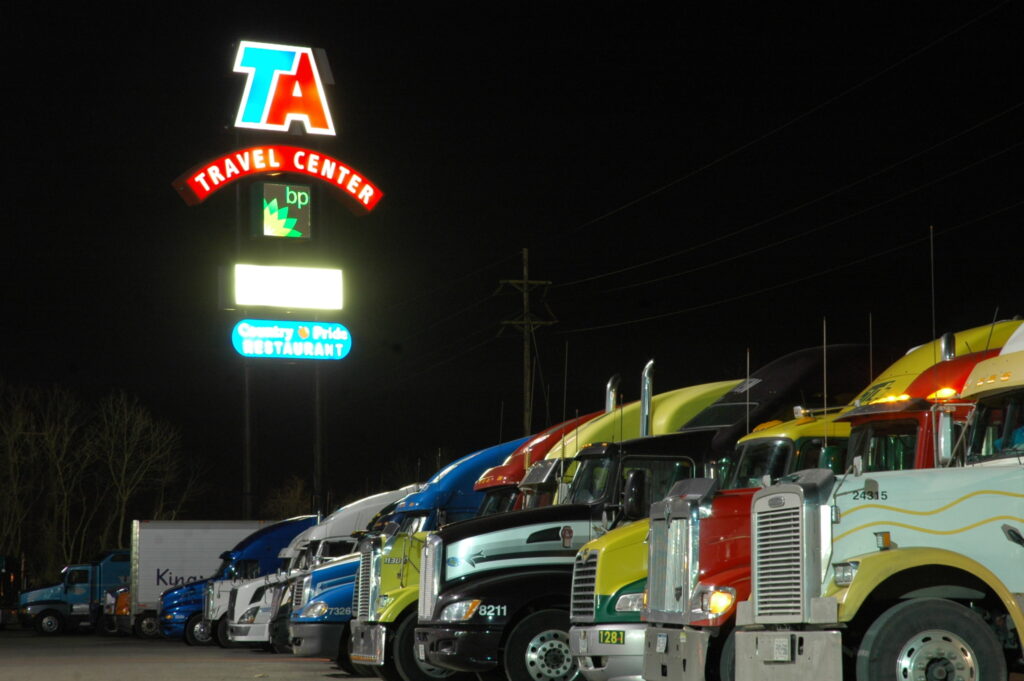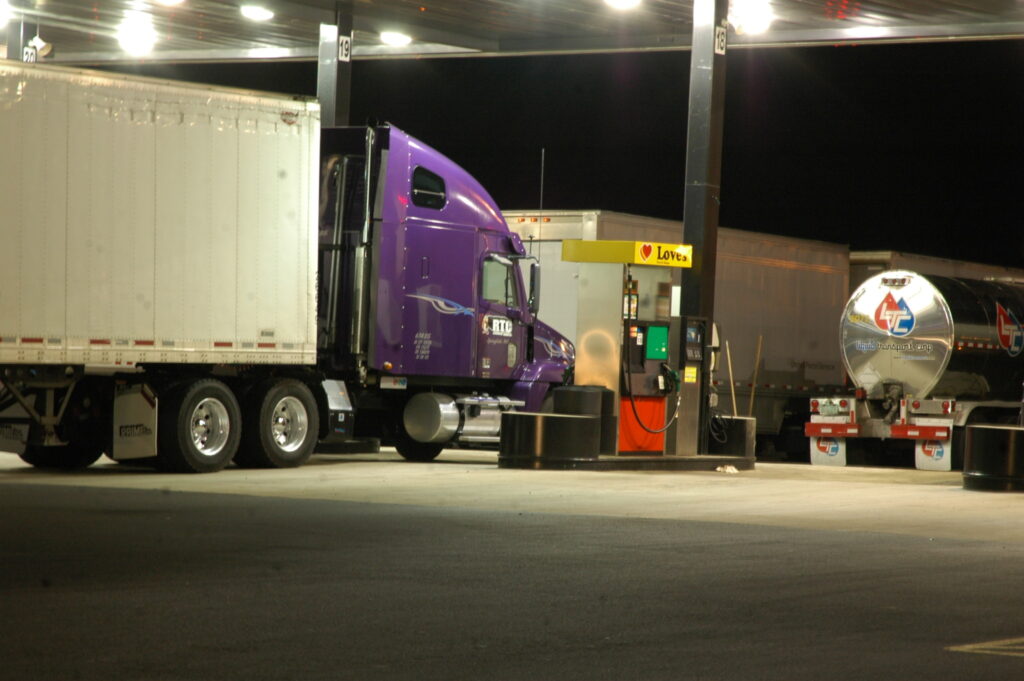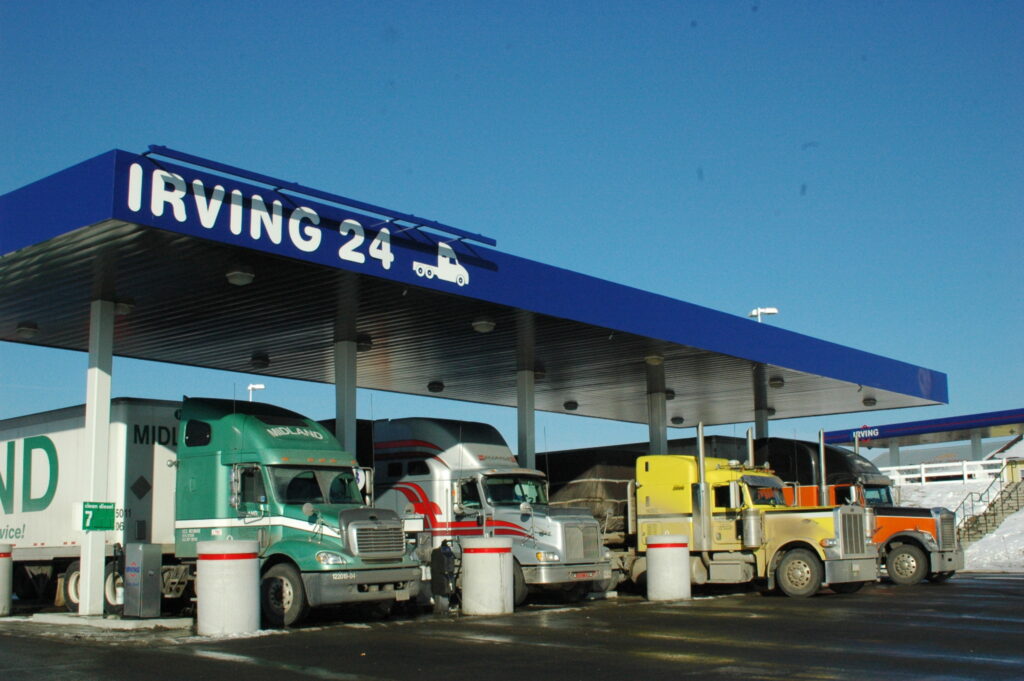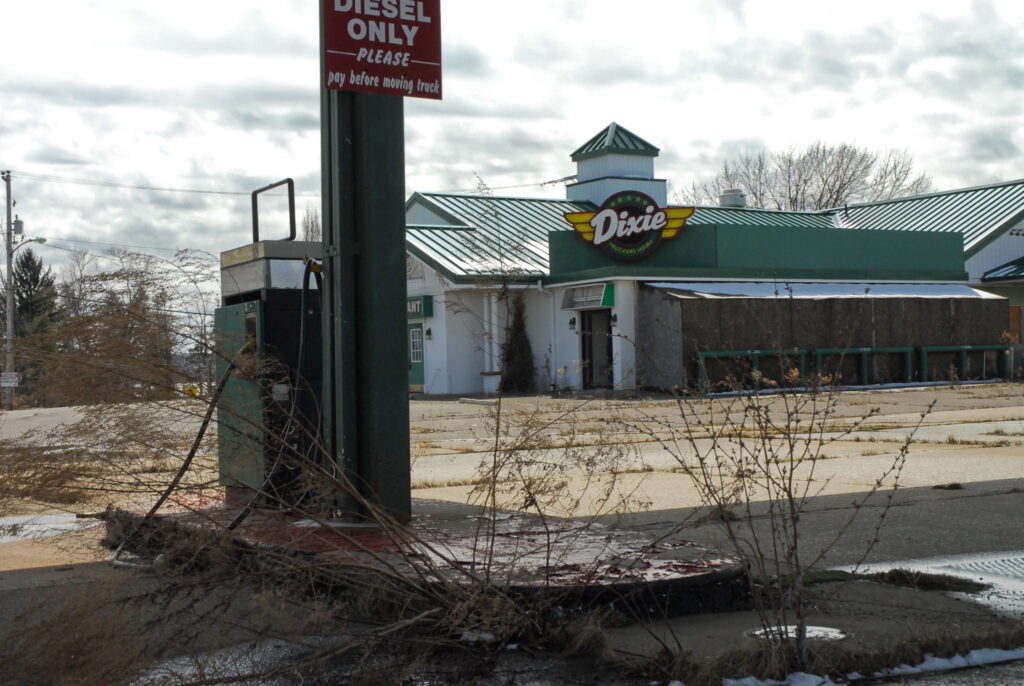The unwritten (but now written) Truck Stop Code: Driver’s Education
Pirates had them. The Marines, too. Lots of groups of like-minded people have codes, like pilots, police officers, golfers. Among other things, golfers are expected to dress respectably, replace their divots, and clam up while someone in the group is putting. Pilots broadcast weather reports so other pilots know what it’s like up ahead, and they don’t fly into uncontrolled traffic patterns from the wrong direction.
Truck drivers also have a “code”, though the kinship that once bound drivers to the code seems to have weakened in recent years. In 25 words or less, it goes something like this: “We’re all in this together. Let’s not make life any more difficult for each other than it already is.”

Okay, I made that up, but the essence remains. Trucking is tough and we generally make more progress when helping one another than stepping on each other’s toes. For example,changing lanes to permit smoother merges into traffic, or allowing another driver to pass even when the speed differential is minimal, or electing not to bother trying to pass in the same circumstances.
I know, that sounds very sophomoric and touchy-feely – “OK everybody, lets hold hands and sing Kumbaya” — but you can’t argue that those little gestures can help to smooth out an otherwise pretty bumpy ride.
The same holds true for truck stops, travel centers, or what ever you prefer to call them. They are hubs for the trucking community. We don’t spend much time breaking bread together anymore, but we get more face time with fellow drivers in those places than almost anywhere else.
For new drivers, or drivers not accustomed to over-the-road operations, these communal meeting places can be intimidating. Everything from backing skills to table manners are on very public display, and you can almost bet there will be someone lurking in the corner with a smartphone at the ready. The best way of maintaining a low profile at a truck stop is to do the right things.

Pull forward after fueling
The clock keeps ticking while you’re fueling, so to avoid delaying another driver unnecessarily, pull the truck off the fuel island when you have finished fueling. Make some room so the next driver can start the process. If you must go inside to complete the transaction or to grab a snack or use the washroom, it’s OK to park temporarily off the fuel island, but remember the driver behind you will soon be finished fueling and will want to clear the island, too. You won’t have time to shower or wait for a takeout order from the restaurant. Pay your bill, grab your coffee, and clear the island. One day you might be “the next driver in line” and won’t appreciate having to wait while the driver in front loads up his or her lunch box.
Drive gently
We have all seen that driver who goes roaring through the parking lot, red-lining every gear, and throwing up clouds of dust — especially when the engine fan is on. All that noise will wake even the soundest sleeper and fill any open-windowed cabs with dirt and debris. That’s a really inconsiderate move.

Park carefully
I have some sympathy for inexperienced drivers when it comes to parking at truck stops. The pressure is high to get backed in and clear the lane so other trucks can park, too. Taking multiple attempts to get into a parking space can seem like an eternity. And, of course, the stakes are high. You don’t want to take off another driver’s fender or mirror in the process. So, for the driver doing the backing: take your time, get out and look (a lot), and be realistic about your chances getting into that spot before the sun comes up. And for those drivers waiting while the poor bugger struggles, turn off your headlights if you can (darned daytime running lights) to cut the glare, or get out of the truck and offer to help guide the driver in. Who knows, the fender you save could one day be your own.
And when you do get parked, take a few extra runs at it if necessary to get straight within the lines. Taking up two parking spots is bad form at any time.
Oh, and if you’re in a tractor-trailer, don’t park in the designated long combination vehicle (LCV) spaces. They have no choice but to use pull-through spaces sometimes set aside for their use.
Consider your neighbors
One sultry summer evening many years ago, I had parked out on the back of the lot, shut the truck off, and opened the windows for a bit of breeze while I lay across the seats for nap. While I was snoozing, a car carrier had backed in beside me and stopped in such a way that his short stubby exhaust stack was aimed directly into my passenger window. While that truck idled away at high idle (the driver was not in the cab), all the soot from his exhaust found its way into my cab and all over me. That driver probably never gave it a second thought, but had he parked a few feet forward or behind my cab, he would not have coated me with a layer of soot.
The same goes for reefer drivers. You may be used to the noise, but it can be a real deterrent to a good night’s sleep for other drivers. You might consider driving into a parking spot rather than backing in to keep the unit away from sleeping drivers. Or, if you haul livestock or trash, park as far away from the rest of the truck stop occupants as you can. Being a little more considerate of your fellow travelers won’t earn you any more money, but it might make you feel better.

Clean up after yourself
Contrary to what some may think, trash doesn’t vanish when it’s thrown out the window. Gravity gets hold of it and it lands with a splat right where another driver will be stepping when climbing out of his or her truck. Who knows, maybe the next time you step down from the cab you’ll land in the middle of a day-old plate of chili with a side of Caesar salad, or something much worse. While it’s a bit of a stretch to think of truck stop parking lots in this way, they are our workplaces. Few people would have the nerve to eat lunch at someone’s desk and sweep the remains onto the floor and walk away, but that’s basically what you’re doing by not disposing your trash properly.
And that “something much worse” hardly needs defining, but sadly there are those among us who are so bereft of pride that they will leave bottles or bags of human waste laying on the ground for some minimum-wage kid to deal with. If you’re looking to be accepted as a member of this community, don’t leave your waste laying on the ground. At the very least, put it into a trash can, or better, carry it inside and dispose of it properly.
Patronize your partners
Finally, since truck stops are vital bits of infrastructure needed desperately by drivers, it’s important that trucking, as consumer of services offered by truck stops, contribute to their survival. When you think about, truck stops provide lots of free services, namely parking — of which there’s a quantifiable shortage. Due to the cardlock system and the way fleets buy fuel in Canada, drivers won’t always have the appropriate fuel card to top-off at the same location they choose to park. In this case, buying something like a meal helps to offset the cost of maintaining the parking lot.
Drivers are quick to complain about parking lots that are not well-maintained, but do you ever stop to consider the cost of paving 10 acres of real estate, lighting it, and providing sewage, environmental protection, refuse collection, and snow removal services?
The late Bob Lodge, patriarch of the 730 Truckstop in Cardinal, Ont., told me many years ago what it cost him to run that place. Back in the ‘90s, he told me his annual maintenance, refuse, and snow removal costs were in excess of $75,000. You don’t make that kind of money back selling cups of takeout coffee and packs of chewing gum.
Drivers would be in a very difficult spot without truck stops, so we should be doing what we can to support our business partners. The products and services may be more expensive than at the local Wally-Mart, but few of those places will let trucks park on their lots overnight.
Stick to the code
If you want to fit in well and be considered good citizen of this little community we call trucking, don’t make life any more difficult for your fellow drivers than it already is. Or, to paraphrase Robert Fulghum, author of All I Really Need to Know I Learned in Kindergarten, play fair. Clean up your own mess. Say you’re sorry when you hurt somebody. Wash your hands before you eat. And flush.
- This is part of an ongoing series of articles to inform truck drivers about tips and strategies that are not always taught in truck driving school.
Have your say
This is a moderated forum. Comments will no longer be published unless they are accompanied by a first and last name and a verifiable email address. (Today's Trucking will not publish or share the email address.) Profane language and content deemed to be libelous, racist, or threatening in nature will not be published under any circumstances.
Well said Jim!
It’s pretty disheartening to an old time professional driver that someone has to spell this “etiquette” topic out so someone has to read it to understand! I guess that is why there has to be warning labels on packaging to prevent injuries! Take care and stay safe
I’ve seen guys drive into a spot only to be trapped because they don’t have the clearance behind to back out when they are ready to leave.
If I’m running a reefer, I will try and park as far away as possible from other trucks.
I love the guys when you have your windows down at 2:00am who pull in and leave their trucks running while they go do what they want to do for half hour. Thanks for the wake up call.
-
Or worse yet, those straight pipe Sallys with their jake on at 3 in the morning.
Great article!!!
more often on good manners
Reefer noise. Got it..I know it can be annoying, I haul one….but drive into a parking space??? Really??? And how do you propose I see to know what’s coming when I want to leave, with supposedly trucks on either side??? Just snap on the four ways, back up and pray noone hits me…or noone walks behind me.. No thanks
I’ll risk annoying my neighbors.
-
I drive in all the time to avoid the noise. Getting out has never been an issue. You should try it sometime!
I PIULL A REEFER TRAILER IN THE ARTICLES COMPLAINT ABOUT THE NOISE OF THE REEFER YOU GAVE TO UNDERSTAND AS IT IS HARD TOO FIND PARKING YOU HAVE TO PARK WHEREVER YOU CAN SO THAT IS JUST PART OF TRUCKING SOMETIMES YOU JUST HAVE TO DEAL WITH IT
Hi Jim.
We already had a “code” problem before but it’s way worst now with all these new drivers.
The T-Can is now a dump and I feel sick about it and I have no answer to this problem. We need help.